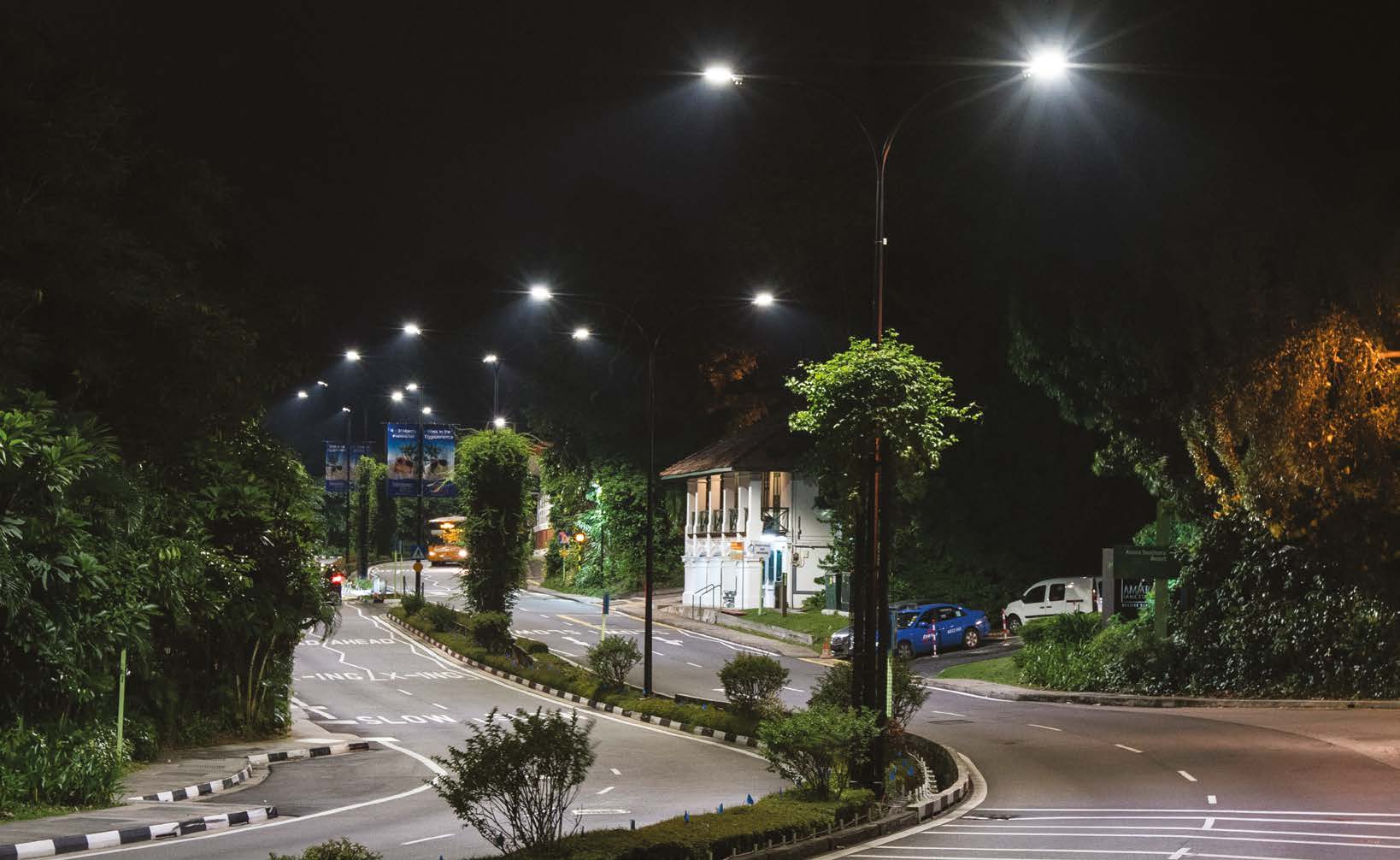If you spend a fair amount of time travelling on Singapore's roads, you might have noticed that things are looking a lot clearer at night, compared to a decade back.
You're not hallucinating.
The roads are clearer at night because our streets are now illuminated by white LED light instead of being bathed in that hazy amber hue that many in Singapore have grown to associate with night drives.
 Via. You can see the amber colour of our street lights in this 2012 photo.
Via. You can see the amber colour of our street lights in this 2012 photo.
The change started in 2014, when the Land Transport Authority (LTA) started replacing older streetlights with LEDs. In 2017, the statutory board announced a five-year plan to do the same for all streetlights under its purview.
By early 2023, the authority said that it had completed replacing 99 per cent of the 110,000 streetlights under its charge, and it would continue replacing older streetlights whenever older roads are handed over by other government agencies.
Moving from yellow to white
That distinctive yellow hue that we associate with streetlights from the past comes from high pressure sodium vapour lamps. This, traditionally, has been the technology used for streetlights across the world.
High pressure sodium vapour street lighting provides aesthetically pleasing warm tones and is cheap to boot.
However, it does not render colours and details well, which might be crucial when you're hurtling at 90km/hour on the PIE.
Better for road safety
That's where LEDs triumph when it comes to illuminating roads.
LEDs reproduce colours of objects more accurately, enabling drivers to see better at night.
LEDs are also directional, which disperses light rays evenly on the roads, and keeps the light from infiltrating other spots like say, a residential estate next to the road.
These characteristics of LEDs improve road safety for all, said LTA, in a response to a forum letter back in 2020.
 Brighter, whiter streetlights. Via.
Brighter, whiter streetlights. Via.
Preferred for efficiency and lifespan
LEDs are also preferred for their efficiency and longer lifespan according to data provided by the LTA.
LED street lights consume 25 per cent less energy than high pressure sodium vapour lights, but are 30 per cent brighter.
This makes them more energy efficient and more environmentally friendly.
LED street lights can last for 10 years on average, which is a much longer lifespan compared to the three years that high pressure sodium vapour lamps typically last for.
This translates to less maintenance required.
Ultimately, these lead to cost savings.
The LTA said in 2023 that switching to LEDs reduced the annual energy consumption of street lighting by about 27 million kWh, which led to cost savings of about S$5 million to S$7.5 million per year.
Mix of two colour temperatures
Interestingly, the light from our street lamps comprises a mix of two different colour temperatures.
Former Minister for Transport S Iswaran said in a 2022 written reply to a Parliamentary Question that most of our streetlights emit a "mix of warmer white light of 3000 Kelvin (K) colour temperature, and brighter white light of 4000 K colour temperature".
The amount of blue light emitted from this mix is of "low intensity" said Iswaran, adding that it has no adverse impact on human health.
That's not all.
The former transport minister went on to reveal that the colour temperature differs depending on the location of the streetlight, specifically, how far or near it stands from residential areas:
"For minor roads, especially those in low rise residential estates, LTA will generally deploy warm white light of 3000 K colour temperature."
Now you know.
If you like what you read, follow us on Facebook, Instagram, Twitter and Telegram to get the latest updates.



